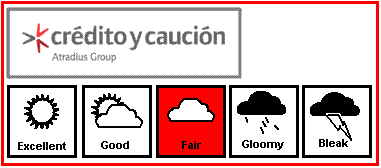| The Danish economy continues to recover slowly from its deepest recession since the Second World War. After moderate growth in the last three quarters, GDP grew 2.8% in Q2 of 2010. However, output is still 3-4 % lower than in Q2 of 2008, and this is also reflected in the loss of 155,000 jobs since 2008. The main drivers of the strong growth in GDP in Q2 were a replenishment of stocks and an increase in public consumption. However, private consumption lost some pace again in Q2, despite record low interest rates and improved household liquidity thanks to a cut in the household tax bill. The consumer confidence indicator dropped several points from August to September, confirming that consumers are still uncertain about the future and are therefore conserving their personal finances. Nevertheless, the most recent indicators of business confidence reflect a more positive sentiment towards a possible upswing in the economy. This is true especially for the service and manufacturing sectors, the latter benefiting from the rebound in neighbouring Germany and Sweden. On the downside, business sentiment in the construction sector is still negative, even though the indicator is showing some signs of improvement. 
After a massive 54% year-on-year increase in 2009, and 54.5% in 2008, the number of corporate insolvencies still remains high in 2010. Over the last 6 months, no trade sector has recorded a significant improvement in its insolvency rate, and the number of corporate failures continues substantially above pre-crisis levels. Figures published by Statistics Denmark show that the number of bankruptcies continues to be very high among the smallest businesses: those that went bankrupt in September employed 2.5 persons on average. After the massive double-digit increases in the last four years, Crédito y Caución expects corporate insolvencies to decrease 10% year-on-year in 2011. The building and construction industries, which were hard hit not only by the economic crisis but also by the bursting of the housing bubble, continue to experience the largest number of insolvencies compared to other industries. Those mainly affected are small enterprises, while medium sized and large businesses have been able to downscale their operations and remain in business. Building and construction Total building and construction investments decreased 11% in 2009, according to the Danish Construction Association, and a further decline of 9% and 3% respectively is expected in 2010 and 2011. The deterioration in activity is caused mainly by continued low demand for new private houses, offices and industrial buildings. That deterioration began as long ago as the building peak of 2006, since then construction of private houses/apartments and business premises has declined by 70% and 45% respectively. The sector is currently supported only by increased public investments. Construction materials A recent survey of businesses in the construction materials sector shows that expectations for future sales and employment remain negative, even though the sector is less dependent on the domestic market than the building and construction sector. However, an 11% increase in export sales since January 2010 has contributed to optimism, at least in some subsectors. Retail Sales decreased 0.7% year-on-year in August, with sales of textiles down 1.3%, sales of foodstuffs down 1.1% and other consumer goods down 0.1%. The overall decline in sales of foodstuffs is due to the hardcore discount market, which has gained market share from independent retailers and supermarkets during the economic crisis. Agriculture The Danish agro industry remains large and is an important factor for Danish exports. However, many farmers are highly indebted, and in 2009 the inflated price of farmland plummeted. The effect on both farmers and related industries will be seen shortly. Machines Many Danish suppliers to international companies suffered at least a 30% drop in turnover during the crisis. Besides low demand for their products, their competitiveness has been eroded by a strong Danish Krone and weak productivity. A large number of these companies have therefore not yet regained their previous market share of export markets and are left with weak balance sheets, because of their typically large fixed cost base. Still a long way to go The government has pursued an expansive fiscal policy since the economic crisis started. That, combined with a loss of revenues from income tax, VAT and other taxes, due to the reduction in GDP and consumer spending, has turned the large public surpluses of previous years into a budget deficit of 3% of GDP in 2009 and probably above 5% of GDP in 2010. The EU Commission has therefore called upon Denmark to counter this development, and the Danish government has consequently announced a stabilisation programme which aims to reduce the budget deficit substantially in 2011-2013. Despite the reduction in public spending, the National Bank of Denmark expects GDP to grow 1.7% in 2011 and 2.0% in 2012, though this is still below the pre-crisis level. Due to its open economy, Denmarks recovery is still highly dependent on developments in the outside world. | 